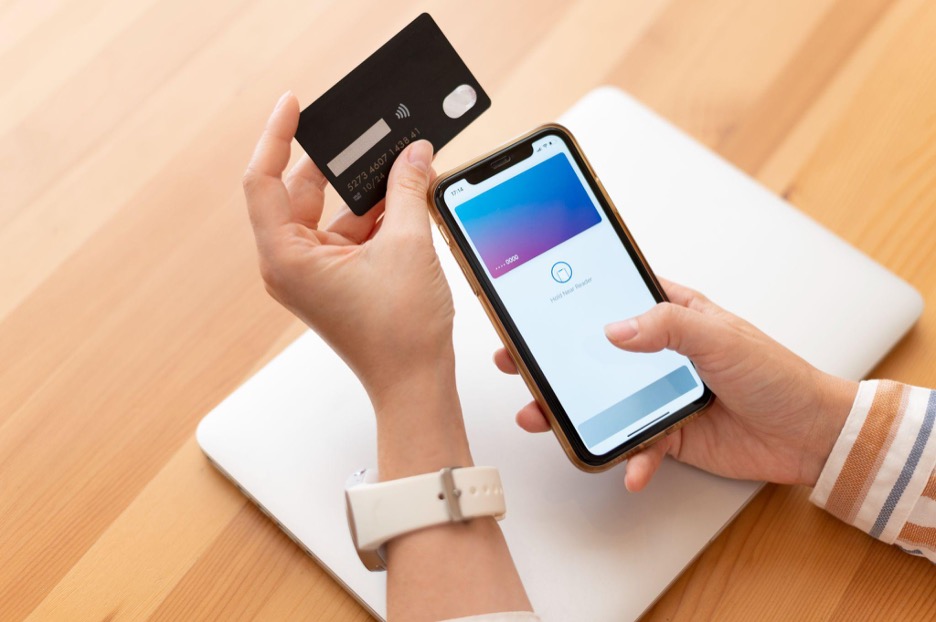
Overdraft fees are one of the most frustrating and unnecessary charges you can face in your financial life. Banks still collect billions each year from consumers who spend slightly more than what they have available, often due to timing issues or small miscalculations. On average, Americans lose around $200 per year to these penalties, sometimes without realizing until it’s too late.
But today, smart banking apps give you more control than ever. With features like real-time alerts, automatic fund transfers, and spending forecasts, these tools can protect your money before the bank gets a chance to charge you. This guide breaks down exactly how to use them to stop overdraft fees from hitting your account.
What Overdraft Fees Are and How They Happen
An overdraft fee is a penalty your bank charges when you spend more than the money available in your account. Instead of rejecting the transaction, the bank covers it and then charges you a fee, usually between $30 and $35 per occurrence.
This can happen in several ways:
- You swipe your debit card for a payment that exceeds your balance.
- A subscription auto-renews and pushes your account into the negative.
- You forget about a pending transaction, and it clears before your next deposit hits.
While some banks have begun reducing or eliminating overdraft fees, many still rely on them as a major source of revenue. The good news is that modern banking apps can help you prevent these fees entirely if you know how to use the tools built into them.
The Smart App Features That Help You Stay Ahead

Most overdraft fees are preventable with the right settings and habits. Here are the top features your banking app should include, and how they work to protect you.
1. Low Balance Alerts
Set your app to notify you when your balance drops below a specific threshold. You’ll receive a push notification, text, or email when your account hits, say, $50 or $100. That gives you time to deposit more funds, pause spending, or move money from a backup account.
Some apps let you set multiple thresholds or customize alerts by account type.
2. Linked Backup Accounts
Many banks and apps allow you to link a savings account, credit card, or line of credit to your checking account. If your balance gets too low, the system automatically transfers funds to cover the shortage.
This setup usually prevents the overdraft entirely or results in a much lower fee, especially compared to standard overdraft charges.
3. Opting Out of Overdraft Coverage
You can ask your bank to decline transactions when you don’t have enough money, rather than covering the payment and charging you a fee. This means your card will be declined at the point of sale, but you won’t get hit with a penalty.
This is useful for people who want tighter spending limits or who’ve been burned by overdrafts in the past.
4. Maintaining a Buffer
A buffer is a set amount of money you intentionally never spend. Some people keep a $100 to $200 cushion in their checking account at all times to absorb unexpected charges or delays in deposit timing.
Apps like Empower and Chime can help visualize this buffer by showing a “safe-to-spend” balance separately from your total available funds.
5. Real-Time Account Monitoring
Check your app daily. Spending a few seconds to confirm your balance and pending charges can help you avoid overdrafts from forgotten subscriptions or misjudged purchases.
Some apps go further by using predictive tools to estimate your cash flow for the week ahead, factoring in bills, income, and typical spending patterns.
Step-by-Step Guide to Setting Up Your App
Setting up your banking app to defend against overdraft fees takes only a few minutes. Here's a simple process you can follow, regardless of which app or bank you use.
Step 1: Log In
Open your mobile banking app and navigate to account settings or alerts.
Step 2: Enable Low Balance Alerts
Look for the alerts or notifications section. Set your threshold, for example, $100. Choose how you want to be alerted: push, text, or email.
Step 3: Link a Backup Account
Find the option to connect a savings account or line of credit. Follow the steps to authorize the link. Some apps let you set the priority order if multiple accounts are available.
Step 4: Opt Out of Overdraft Coverage (Optional)
If your app allows, disable overdraft protection so that transactions decline instead of being approved with a fee. You may have to do this via your bank’s website if it’s not in the app.
Step 5: Set a Spending Buffer
Manually subtract your buffer amount from your displayed balance. If your app has a “safe to spend” feature, use that as your daily guide.
Step 6: Check Daily
Build a habit of checking your app before you spend. Look at pending transactions, scheduled payments, and your forecasted balance if available.
Top Banking Apps That Help You Avoid Overdraft Fees

Not all apps are created equal. Here’s how some of the most popular smart banking apps stack up when it comes to overdraft protection tools.
| App | Alerts | Backup Account | No-Fee Overdraft | Spending Tools |
| Chime | Yes | Yes | Yes (up to $200) | Yes |
| SoFi | Yes | Yes | Some fees waived | Yes |
| Dave | Yes | Yes | Yes | Yes |
| PNC (Low Cash Mode) | Yes | Yes | Grace period | Yes |
| Regions (Overdraft Grace) | Yes | Yes | Yes (limited time) | Yes |
| Empower | Yes | Yes | Varies | Yes |
These apps offer different combinations of alerts, automatic transfers, and no-fee overdraft coverage. Choose the one that fits your habits and preferred style of money management.
Should You Opt Out of Overdraft Coverage?
Opting out of overdraft coverage means your bank will block any debit card or ATM transactions that exceed your available balance. Instead of approving the charge and applying a fee, your card will be declined.
This is useful if:
- You want full control over your spending
- You’d rather face a declined transaction than pay a $35 fee
- You rely on alerts and monitoring instead of post-transaction fixes
However, opting out may not be ideal if:
- You need essential bills to go through, regardless of balance
- You often make last-minute payments before deposits arrive
- You don’t check your app regularly
You can always re-enable coverage later if needed. Some apps allow toggling this setting directly; others require contacting your bank.
How to Respond If You Already Paid an Overdraft Fee
If you’ve already been charged an overdraft fee, don’t assume it’s final. Many banks are willing to waive the first or occasional fee, especially for long-time customers or those who rarely overdraft.
You can either call customer support or use your bank’s in-app messaging system. Here’s a simple script to follow:
“Hi, I noticed an overdraft fee on my account. I’d like to request a courtesy refund. I’ve been a loyal customer, and this is a rare occurrence.”
Most banks will refund the fee at least once, especially if your account has been in good standing.
How to Lock In a Fee-Free Setup That Works Long-Term
Overdrafts are preventable when you combine simple habits with smart banking tools. Here’s the setup that works for most users:
- Enable low balance alerts
- Link a backup account
- Maintain a spending buffer
- Monitor your account daily
- Consider opting out of overdraft coverage
Take a few minutes to customize your banking app settings. Once set up, your app can protect your money, reduce financial stress, and help you avoid ever paying another overdraft fee again.
How Smart Banking Apps Compare to Traditional Banks

Traditional banks are designed to allow overdrafts to happen. Most rely on reactive systems: a payment is approved even when funds are missing, then a fee is charged afterward. They may offer overdraft protection, but it often comes with conditions, fees, or hidden costs.
Smart banking apps flip the script. These tools are proactive. They alert you before you overdraw, give you options to transfer funds automatically, and even decline transactions to avoid fees altogether. Some digital banks have eliminated overdraft fees entirely.
Key Differences:
| Feature | Traditional Banks | Smart Banking Apps |
| Real-time alerts | Often limited or delayed | Standard, customizable |
| Automatic transfers | Manual setup may cost fees | Often free, seamless |
| Overdraft prevention | Limited | Built-in, active features |
| Fee forgiveness | Case-by-case, rare | Often integrated or automatic |
| User control | Low | High (opt-out, budgeting tools) |
For consumers who want to avoid surprise charges and keep control of their money, smart apps are the better choice.
Tips Based on Who You Are
For Students
Choose an app with real-time alerts and no-fee coverage. Keep a buffer and use budgeting tools to track your spending. Set daily balance checks.
For Chase Users
Turn on alerts in the mobile app. Link a Chase savings account for overdraft protection. Consider opting out of overdraft coverage if you want full control.
For Wells Fargo
Check your app’s overdraft protection settings. Use their mobile alerts to stay updated. Be aware that fees can still apply unless you disable coverage.
For Gig Workers
Set up daily alerts since income is irregular. Use apps that offer early direct deposit and flexible transfers. Keep a higher buffer to cover low-income weeks.
For No-Fee Bank Hunters
Use banks like Chime or Dave that have no-fee overdraft policies. Look for features like "SpotMe" or overdraft forgiveness windows built into the app.
Common Triggers That Cause Overdrafts Without You Noticing
Some overdrafts catch you off guard. These are the hidden ways your balance can drop without warning.
Subscription Renewals
Streaming services, apps, and memberships renew even if you forget about them.
Delayed ACH Withdrawals
Payments to utilities or online platforms may be processed days later, throwing off your balance.
Pending Card Holds
Gas stations, hotels, and rental services often place temporary holds larger than your purchase.
Manual Check Clearance
Paper checks take time to process. Your balance might look higher than it actually is until the check clears.
Be aware of these issues and check your app for pending transactions regularly.
Frequently Asked Questions
Can a banking app really prevent overdraft fees?
Yes. Apps can warn you before you overspend, move funds automatically, and let you block overdrafts altogether. Many users go years without paying a single fee.
Is it better to link savings or opt out of overdraft?
Linking a savings account prevents overdrafts by covering shortfalls. Opting out stops the transaction from happening. Both methods work; combining them offers maximum protection.
Which banks offer no-fee overdraft protection?
Banks like Chime, Dave, and Varo offer fee-free overdraft coverage up to a certain limit. Others, like PNC and Regions, offer grace periods that give you time to fix the issue before a fee is charged.
How much should my buffer be?
A typical buffer is $100 to $200. Choose an amount you won’t touch for regular spending. Your app should not display this amount as available to spend.
Can I get a refund for an overdraft fee?
Often, yes. Most banks will waive a first-time fee or an occasional one if you contact them directly and ask. Use in-app messaging or call your bank.
Get help with your refund
"This app saved me
$127 in minutes"





.svg)
.png)


